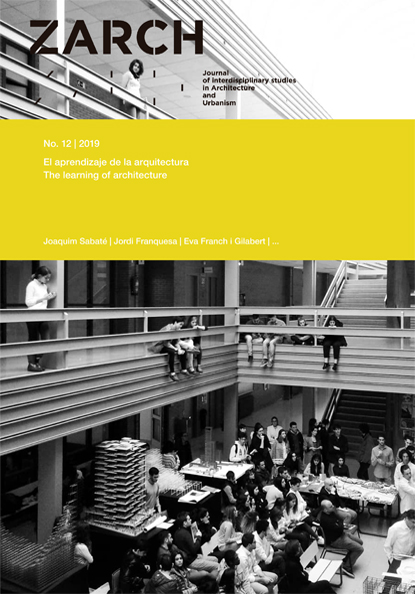The ‘enabling’ master’s degree in architecture, an opportunity for experiential learning
DOI:
https://doi.org/10.26754/ojs_zarch/zarch.2019123569Keywords:
PFC, Master’s degree in architecture, ETSAV, Participation, CompetencesAbstract
Schools of architecture have recently converted the former Final Degree Project into a one-year ‘enabling’ master’s degree. This is a collateral effect of adapting Spanish university studies to the European legislative framework. Faced with this challenge, the Escola Tècnica Superior d’Arquitectura del Vallès (ETSAV) proposed the implementation of a teaching model that would allow students to learn based on the experience of interaction with ‘the people’ and construction experimentation. On a methodological level, the article reviews the theoretical basis related to this model based on the condition of an open process, physical experimentation and social return. It also makes a critical approach of the three first years of the master’s degree to identify and review the teaching tools implemented, the subjects being researched and the contradictions that emerge. It concludes by evaluating the results obtained and identifying the need to balance learning between psychosocial competences and construction and technological competences, representing the main challenge and potential complexity of the service-learning projects conducted by the ETSAV’s ‘enabling’ master’s degree.
Downloads
References
De Carlo, Giancarlo. 1980. An architecture of participation. Perspecta vol. 17: 74-79. (on-line from JSTOR)
Escola Tècncia Superior d’Arquitectura del Vallès, “Màster Universitari en Arquitectura”, https://marq.etsav.masters.upc.edu/ca (consultada el 15 de septiembre de 2018).
Friedman, Yona. 2011. Arquitectura con la gente, por la gente, para la gente. León: Musac – Actar.
Garcés, Marina. 2016. Fora de clase. Textos de filosofia de guerrilla. Barcelona: Arcàdia.
Garcés, Marina. 2014. Un mundo común. Barcelona: Edicions Bellaterra.
Hansen, Oskar and Zofia Hansen. 1969. The Open Form in Architecture – the Art of Great Number. In CIAM’59 in Otterlo, ed. Oscar Newman, 190-196. Stuttgart: Karl Krämer Verlag.
Jacobs, Jane. 1967. Muerte y vida de las grandes ciudades. Madrid: Ediciones Península.
Pallasmaa, Juhani. 2012. La mano que piensa. Sabiduría existencial y corporal en la arquitectura. Barcelona: Gustavo Gili.
Rasmussen, Steen Eiler. 2000. La experiencia de la arquitectura. Madrid: Mairea - Celeste.
Sennett, Richard. 2014. L’espai públic. Un sistema obert, un procés inacabat. Barcelona: Arcàdia.
Turner, John F.C. 1972. The reeducation of a professional. In Freedom to Build, dweller control of the housing process, eds. John F.C Turner and Richard Fichter, 122-147. New York: Collier Macmillan.


